The American Museum of Natural History (AMNH) is one of the largest museums in New York City. In its galleries, you can discover several permanent exhibitions dedicated to fossils, biodiversity or the origins of man and civilization. Just like the MET Museum and the MoMA, (Museum of Modern Art), this museum is one of the city's must-see cultural sites.
What I particularly like about this museum is that it is great for families. Children and adults both can enjoy looking at impressive dinosaur skeletons, discovering naturalised animals, or touching real meteorite fragments. If you want to visit New York City's Museum of Natural History, here is an overview of everything that awaits you there, as well as all you need to know to prepare your visit as best as possible! 😊Why visit the American Museum of Natural History in New York City?
Since its establishment in 1869, the AMNH has always attracted many locals and tourists. This is because public exhibitions started being organised in this building as early as 1871. The collections quickly expanded and the construction of a building entirely dedicated to them was started in 1874. This new museum was inaugurated 3 years later, in 1877, by the 19th President of the United States, Rutherford B. Hayes.
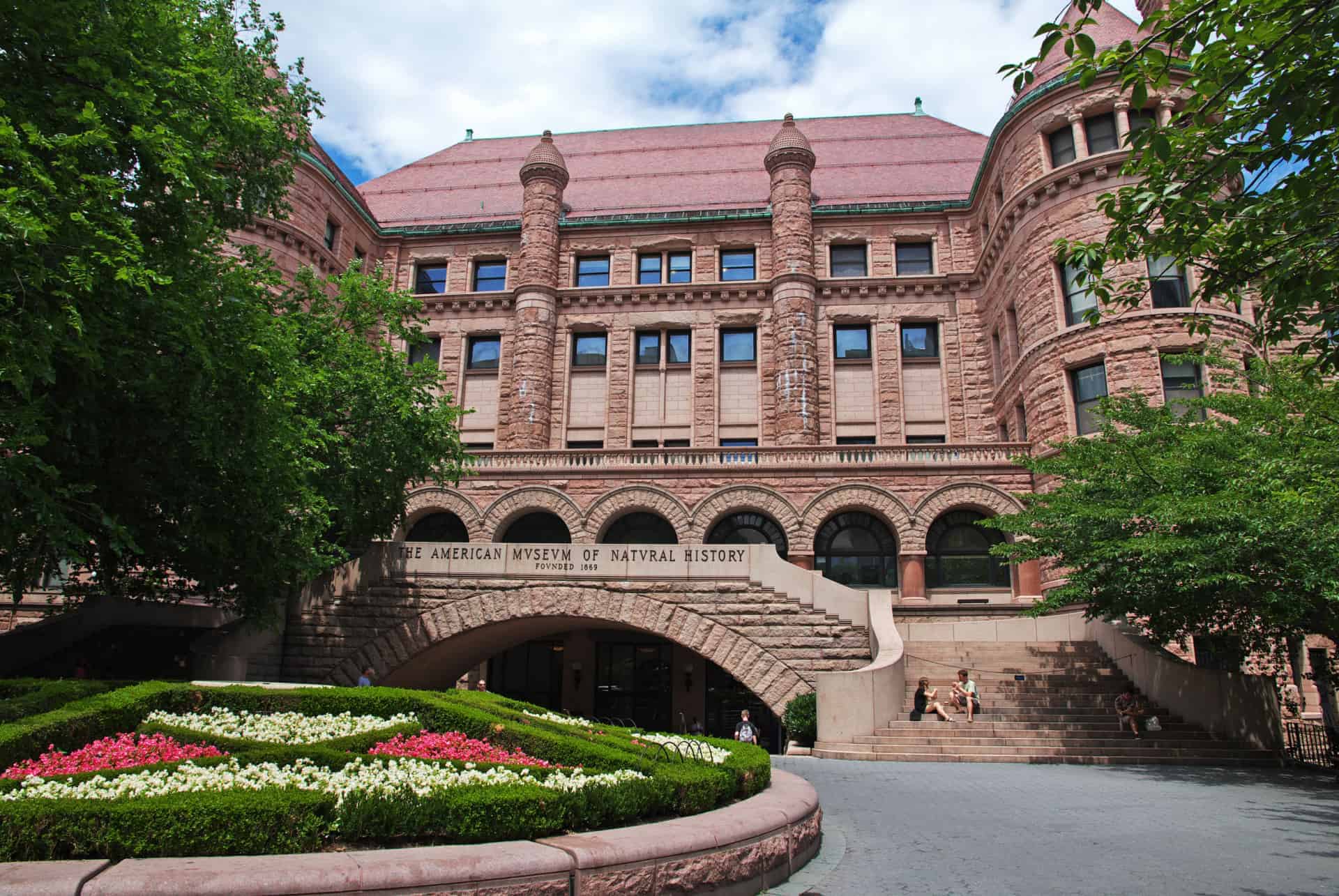
Over time, the New York Museum of Natural History continued to expand, including the construction of a planetarium and an auditorium. Its famous arched façade was completed in 1936. Nowadays, more than 5 million visitors come each year to discover all the exhibits.
In total, more than 32 million specimens and objects are displayed or preserved in the museum, and its collections of fossils and insects are among the largest in the world.
More than just a museum, the AMNH is also home to a research centre and a team of more than 200 researchers with expertise in many fields, such as anthropology, astronomy, palaeontology and mineralogy.
Prices of the American Museum of Natural History
For your visit, you can of course choose to discover the museum by yourself. There are also themed tours available – you can for exemple choose the space tour, the dinosaur tour, or even a tour that will take you through all of the most iconic rooms of the museum. In my opinion, the latter is the best way to visit the AMNH.
Category | Standard Admission Ticket | Standard ticket + 1 temporary exhibition | Standard ticket + all temporary exhibitions | |
|---|---|---|---|---|
Adults | £23 | £28 | £33 | |
Senior citizens (60+ years) & students (with ID) | £18 | £22 | £25 | |
Children (4-12 years) | £13 | £16 | £20 |
The temporary exhibitions change quite regularly, so if you wish to know what exhibitions are on at the time of your trip to New York City, just go to the ticket booking site.
Right now (January 2023) you can see Sea Lions: Life by a Whisker (about the life of an Australian sea lion), Sharks, or Worlds Beyond Earth at the Rose Centre.
You can also choose guided tours in English or other languages. The foreign-language tours are not available every day, so check the official museum website in advance to see the tours they offer, if English isn’t your mother tongue. If you really want to learn more, ask questions and talk to someone who knows a lot about the expositions, I have a good plan for you – a 2.5 hour guided tour with an art history specialist for £97 per person. He will explain the different expositions in a different way and will give you several anecdotes and tips throughout the visit.
As the museum is extremely popular, queues at the entrance can be long. It is strongly advised to book your tickets in advance. Also note that the museum is included in some of the New York passes. Thanks to these, you won’t even have to queue and therefore you will not waste time at the entrance! 😉
If you want to discover New York City, these City Passes also grant access to many other places in the city – and of course, to most of the city’s most symbolic places.
Have you thought about a tourist pass? 🎫

For a first time visitor to New York City, I highly recommend the New York CityPASS. This is the most affordable pass in New York City and includes the essentials – the American Museum of Natural History and the Empire State Building. These two are mandatory visits with the pass, and you will then have to make a choices between:
- The Statue of Liberty OR a Hudson River Cruise,
- The 9/11 Memorial & Museum OR the Intrepid Sea, Air and Space Museum,
- The Top of the Rock OR the Guggenheim Museum.
This tourist pass is really great and the price is really not that expensive all things considered – about £114 per adult and £97 for children.
The American Museum of Natural History's must-sees
The American Museum of Natural History is very large (45 rooms over 5 floors) and there is so much to see that one day will never be enough. You will therefore have to make a choice between the different halls of the museum and only go to the ones you most want to see.
The Cullman Hall of the Universe
Let's start this hypothetical tour in a very specific order: from the basement up to the top floor. In the basement, you will find the Cullman Hall of the Universe. It is dedicated to the galaxies and the universe as a whole. On display here is the largest meteorite found in the United States, weighing over 15 tons – that’s definitely one of the many must-sees of the museum! 🤩
The Milstein Hall of Ocean Life
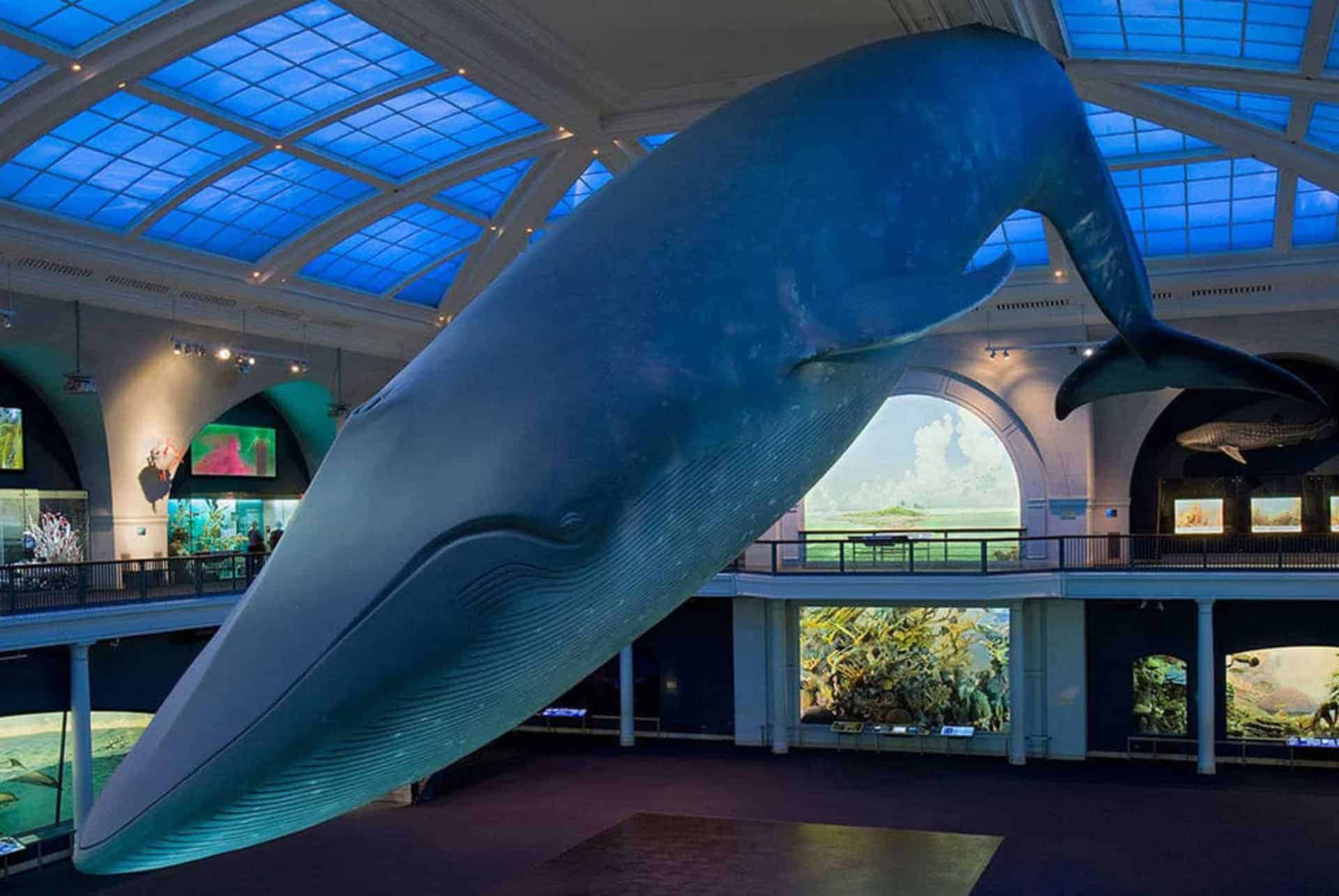
Next, let's go to the ground floor – the American first floor – where you will discover the most famous blue whale in the world, in the Milstein Hall of Ocean Life. It hangs from the ceiling and is really impressive 🐋
More than 750 marine creatures are featured in this exhibition, which unveils some of the secrets buried in the depths of the oceans.
The Akeley Hall of African Mammals & Birds of the World
We then arrive on the first floor of the museum (reminder – there are 5 floors in total). Here you will find the Akeley Hall of African Mammals & Birds of the World, which houses a unique display of animals from the African continent and birds from around the world.
Of course you will also find other very interesting rooms on this floor, such as The Butterfly Conservatory, a butterfly museum with over 500 species, all under a giant veranda. It's a really amazing show that is not to be missed! 🦋
The Mignone Hall of Gems & Minerals
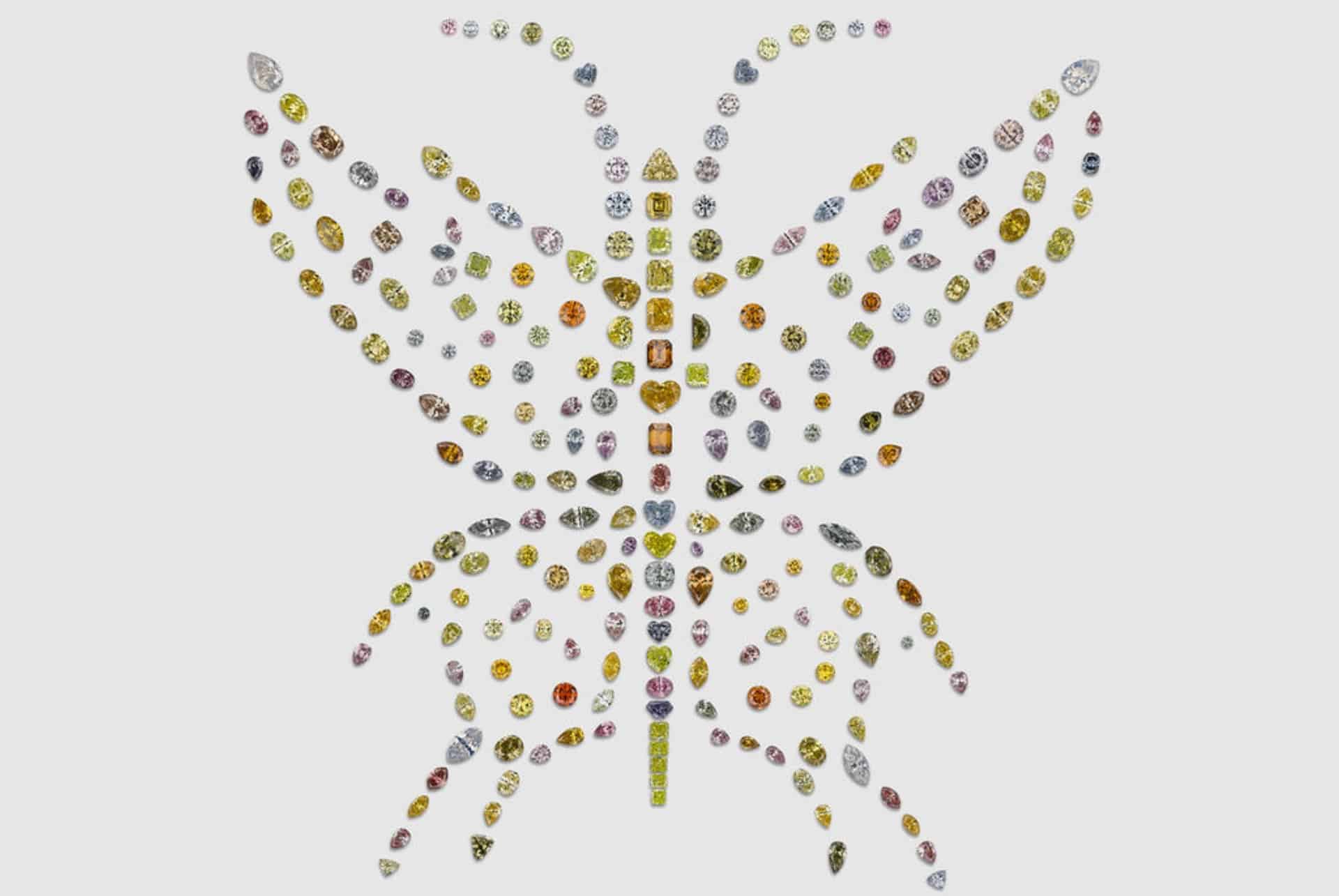
Let's stay on the first floor of the American Museum of Natural History and go to the Mignone Hall of Gems & Minerals. Here you will find one of the most beautiful collections of precious and semi-precious stones – there are precisely 5,000 different stones from 98 different countries.
This hall has only been open since the spring of 2021, and houses the famous Star of India, the world's largest sapphire with 563 carats 💎 It was discovered in Sri Lanka and is 2 billion years old.
You will also discover the Butterfly of Peace, a butterfly made of diamonds that are surprising to say the least, since they become fluorescent under a UV lamp – a true artwork 🤯
The Fossil Halls
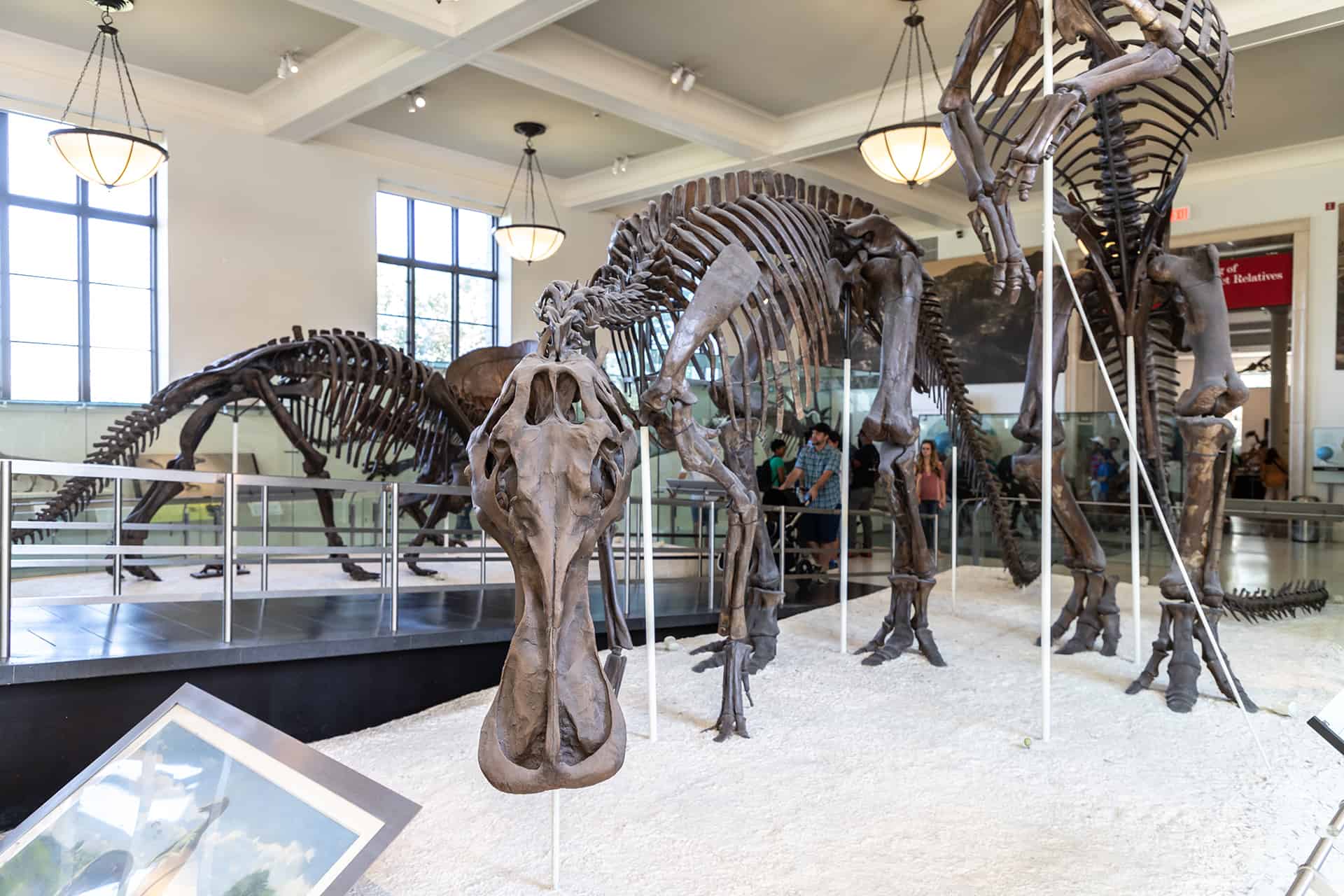
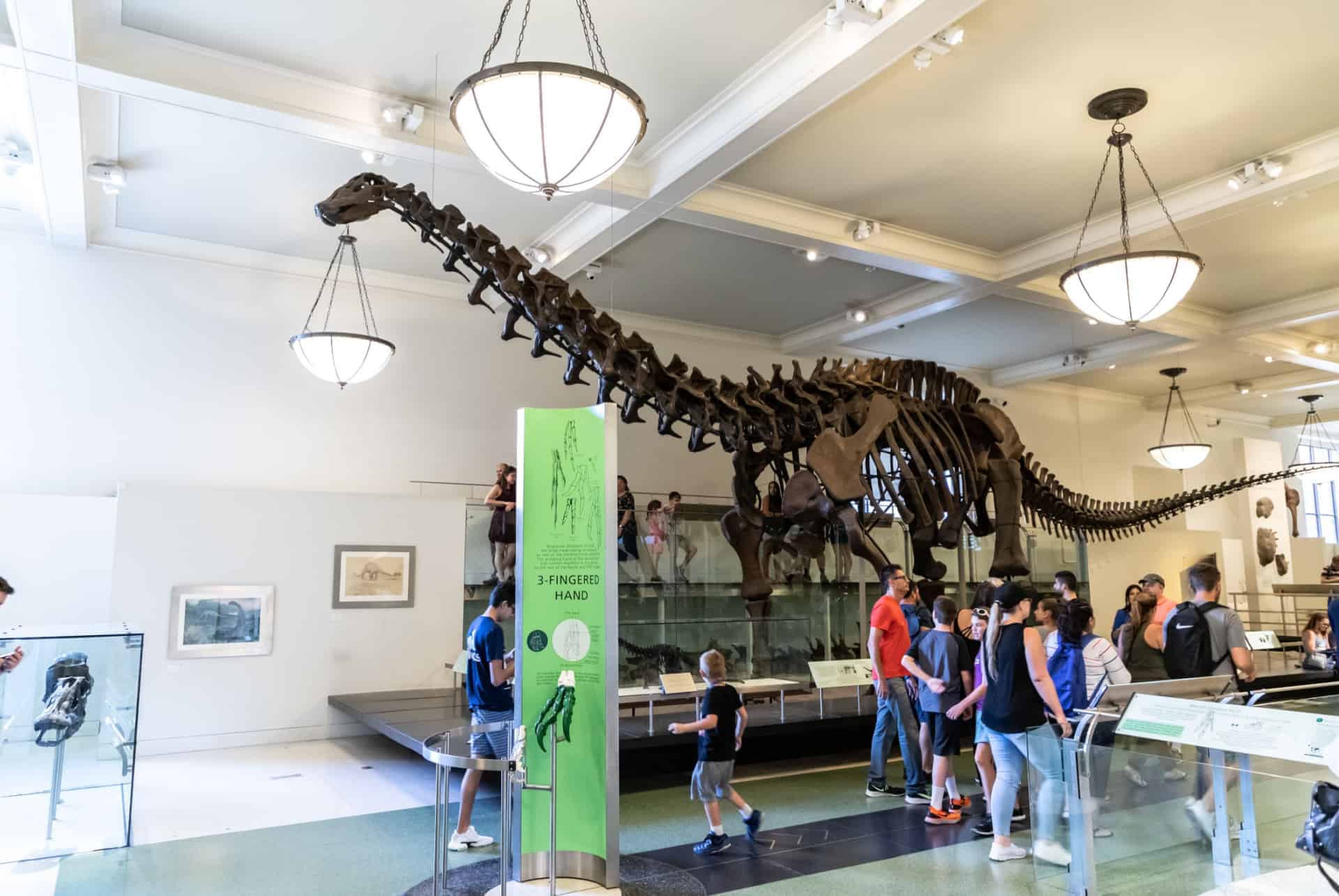
Now let's go straight to the third floor, to find the most famous rooms of the AMNH: the fossil rooms. Inside, you will find some very impressive dinosaur skeletons. In order – you will first arrive in the Miriam and Ira D. Wallach Orientation Center, which will explain the history of these mysterious dinosaur specimens.
You'll then proceed to the Hall of Vertebrate Origins, where you'll learn a lot about the origin of dinosaurs – such as the fact that these animals appeared about 500 million years ago.
After this, go to the Hall of Saurischian Dinosaurs and the Hall of Ornithischian Dinosaurs, to see the actual skeletons. Speaking of which, it is in the Hall of Saurischian Dinosaurs that you will find the tyrannosaurus fossil made famous by the Jurassic Park trilogy 🦖
Finally, end your visit by going to the top floor of the museum – to the Hall of Primitive Mammals and the Hall of Advanced Mammals more precisely, to discover other extinct species such as the mammoth (over 11,000 years old!).
Temporary exhibitions
In addition to the permanent exhibitions, temporary exhibitions are organised regularly. These usually are interactive activities and may include, for example, the projection of 3D films.
Access to these temporary exhibitions is not normally included in the standard admission ticket, so if you are interested, you should opt for the standard ticket + access to special exhibits. Each year, more than 150 films, workshops, lectures and public demonstrations are held in the museum.
Rooms and themes of the American Museum of Natural History
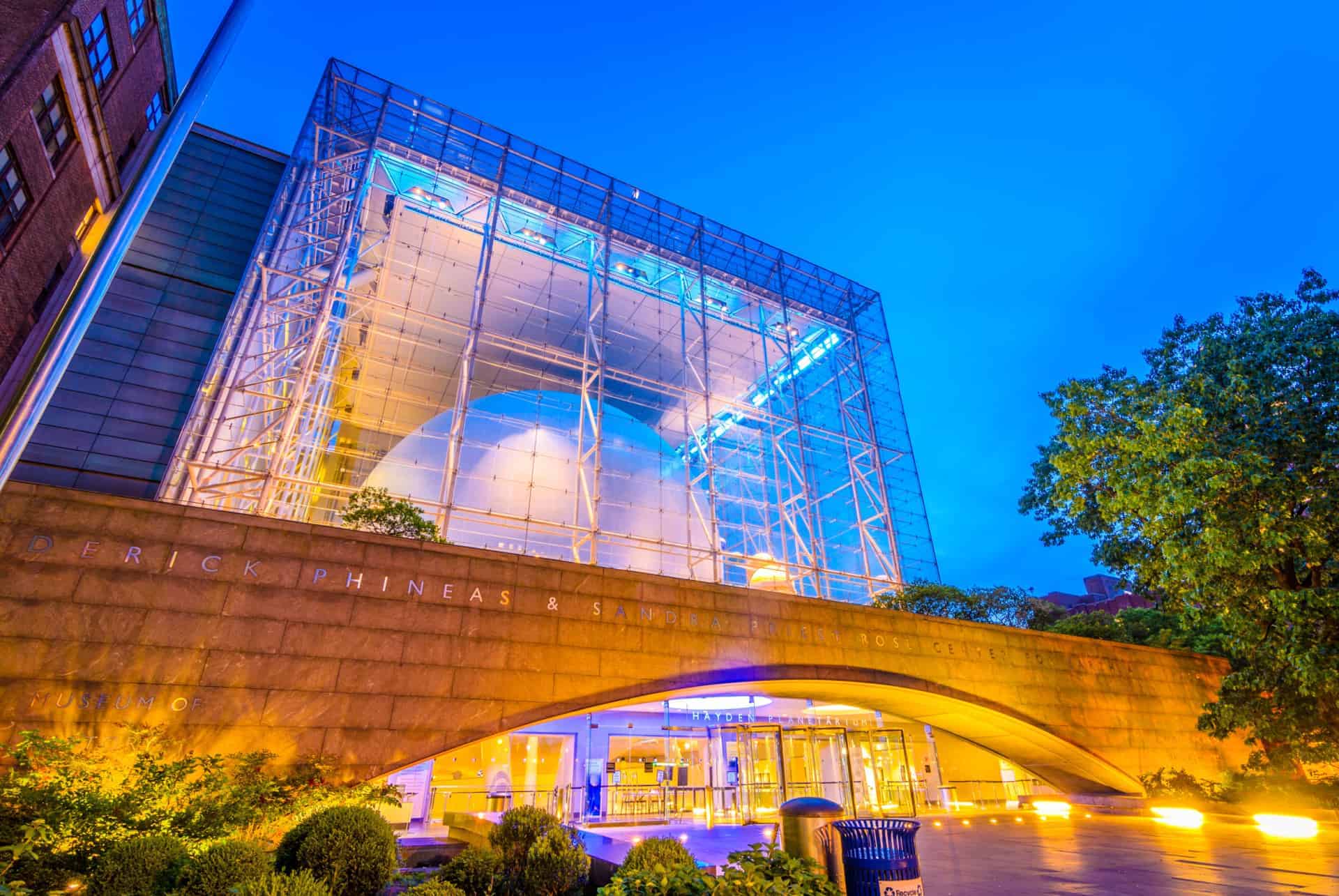
And we’re done with my tour of the American Museum of Natural History. This is an example you can follow on your first visit – because, again, it is impossible to discover the whole museum in a mere day. This tour will take about 1h30 which, I think, is more than enough for a visit to the museum – especially if you are accompanied by children! 😉
Naturally, if you have the opportunity to return to the American Museum of Natural History during a second trip to New York City, you can then discover many other halls:
- The Spitzer Hall of Human Origins, which exhibits many bones dating from prehistoric times;
- The Bernard Family Hall of North American Mammals, with its reproductions of animals in their natural habitat;
- The Ross Hall of Meteorites, with some particularly intriguing meteorites on display;
- The Memorial Theodore Roosevelt, where you’ll also get an idea of the dinosaur skeletons that await you on the upper floor;
- The Hayden Big Bang Theater and the Hayden Planetarium Space Theater in the Rose Center, two panoramic movie theatres that will let you witness the birth of the universe and enjoy an immersion in space
That is of course not all, but it is a brief overview of what you can expect when visiting the works of art at the American Museum of Natural History. Other permanent and temporary exhibitions at the museum all address the following themes:
- Biodiversity and the environment;
- Birds, reptiles and amphibians;
- Life and Earth Science and Astronomy;
- Fossils and the origins of Man and civilization.
Have you booked your activities in New York City? 🗽

You are currently planning your trip and are still wondering what to do in New York City? I really recommend getting started as soon as possible! Although there are many activities in the Big Apple, they are often very popular with tourists all year round – if you wait too long, you may end up unable to buy any ticket for something you really want to do.
Here, you are in the right place to book your tickets in advance! With your tickets in your pocket (or phone!), you can visit all the iconic places in the city such as the Statue of Liberty, Ellis Island, the Empire State Building or the Top of the Rock. Why not also try a 15-minute helicopter flight over New York City? Unforgettable thrills guaranteed! 🤩 Last but not least, you can discover New York City's art during guided tours of the world's most famous museums in New York 😉
How to get to the American Museum of Natural History?
The museum's address is 200 Central Park West, New York, NY 10024, USA. The American Museum of Natural History in New York City is open Wednesday through Sunday, 10:00 am to 5:30 pm, except on Christmas Day and Thanksgiving.
There are several ways to get there, either by foot or by underground. By foot it's quite easy – you can even walk through Central Park, to the exit of the park near the American Museum of Natural History. If you ask me, it's the best way to do two things at once!
By underground, you will have several options depending on your starting point. You can use lines B or C and stop at the 81st St. station, or use line 1 and stop at the West 79th St. station. From there, you will just have to walk a few minutes.
Useful information
- Photos are allowed, but selfie poles are not 📸
- Backpacks and luggage must be left in the cloakroom. The baggage locker costs $2.
- Restaurants are available on several floors of the museum.
- The smartphone application AMNH Explorer (Apple / Android version) contains an interactive map and a lot of useful information for a visit to the museum.
- The museum being very popular, I strongly recommend purchasing your tickets as soon as possible to make sure you will be able to go during your stay. When there are many visitors, some will be unable to enter the museum because its maximum capacity will have been reached. So really, the best thing to do is to make a reservation beforehand! 😉
And that’s it for now! I hope this article has been helpful in planning your visit to the American Museum of Natural History – it really is one of the most important museums in New York. Actually, in my opinion, it is THE most important museum 😁
As an aside, this style of indoor activity is perfect if you are facing harsh weather conditions on your trip. Another option is to go see a musical on Broadway! 😄


0 Comments